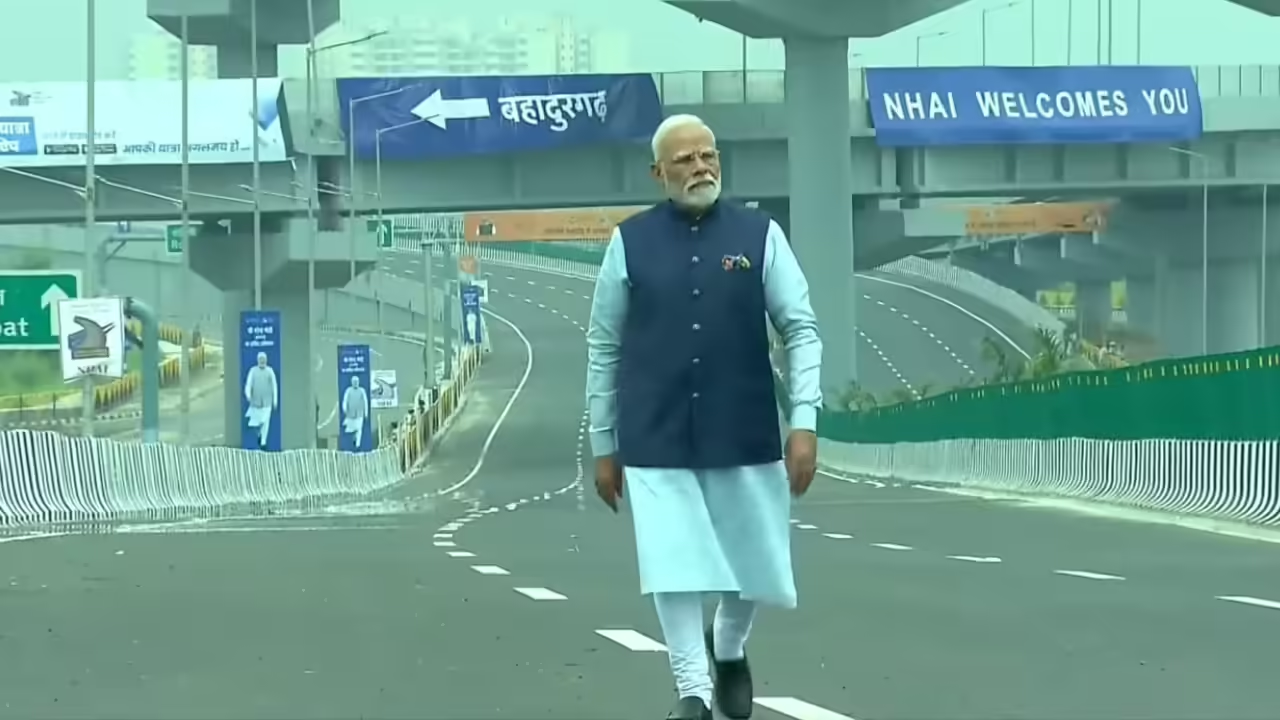
Prime Minister Narendra Modi inaugurated two major highway projects in Delhi-NCR on Sunday, marking a significant milestone in the region’s infrastructure development. The projects, worth nearly ₹11,000 crore, include the 10.1-km Delhi section of the Dwarka Expressway and the Alipur–Dichaon Kalan stretch of the Urban Extension Road-II (UER-II). The inauguration took place in Rohini on August 17, with the Prime Minister emphasizing the transformative role these projects will play in decongesting Delhi and improving connectivity across the National Capital Region (NCR).

Prime Minister’s Address to the Nation
Ahead of the inauguration, PM Modi inspected the sites and interacted with shramyogis (construction workers). While addressing the gathering, he linked the event’s timing with the festive spirit of Janmashtami, saying, “The expressway is named after Dwarka, the event is being held in Rohini, and the entire environment has become truly Krishnamayi. I too belong to the land of Dwarka, and today feels even more special.”
Highlighting the broader significance, the Prime Minister described the projects as a “development revolution” for Delhi. Referring to his Independence Day speech, he added, “When the world looks at India, its first glance falls on Delhi. Our capital must set an example of progress and modernity, showcasing the true spirit of a developing India.”
Dwarka Expressway: A Game-Changer for Connectivity
The Delhi section of the Dwarka Expressway has been constructed at a cost of ₹5,360 crore. It is divided into two key stretches: a 5.9-km segment from Shiv Murti intersection to Dwarka Sector-21, and a 4.2-km extension connecting to the Delhi-Haryana border. This expressway is designed to provide seamless multi-modal connectivity, linking Yashobhoomi convention centre, Delhi Metro’s Blue and Orange lines, the upcoming Bijwasan railway station, and the Dwarka cluster bus depot.
This project complements the 19-km Haryana section of the expressway, which was inaugurated by PM Modi in March 2024. Together, they are expected to significantly ease travel between Delhi and Gurugram while enhancing access to key commercial and transport hubs.
UER-II: Easing Traffic Congestion in Delhi
The ₹5,580-crore UER-II corridor stretches from Alipur to Dichaon Kalan, linking NH-44 with NH-48. The project also includes spurs to Bahadurgarh and Sonipat, making it a vital connector for NCR commuters and long-haul freight movement. Once operational, the corridor is expected to decongest the Inner and Outer Ring Roads, along with busy intersections such as Mukarba Chowk, Dhaula Kuan, and NH-09.
Cutting Travel Time and Supporting Green Goals
Together, the Dwarka Expressway and UER-II will drastically cut travel time from Singhu border to IGI Airport—from nearly two hours to just 40 minutes. The improved traffic flow will ease the movement of goods across NCR, reduce vehicular congestion, and help lower air pollution levels. These initiatives align with the Road Transport Ministry’s larger ₹50,000-crore masterplan to decongest Delhi and improve regional connectivity.
Leaders Present at the Event
The inauguration ceremony was attended by several key leaders, including Union Road Transport Minister Nitin Gadkari, Delhi Chief Minister Rekha Gupta, and Haryana Chief Minister Nayab Singh Saini. All highlighted the significance of the projects for boosting economic activity and improving the quality of life for NCR residents.
A Step Towards Delhi’s Development Revolution
With the launch of these two mega infrastructure projects, Delhi-NCR takes a giant leap towards becoming a model of modern connectivity. By easing congestion, reducing travel time, and improving environmental outcomes, the Dwarka Expressway and UER-II corridor are set to reshape mobility across the capital region, making Delhi a true symbol of India’s development journey.




Leave a Reply